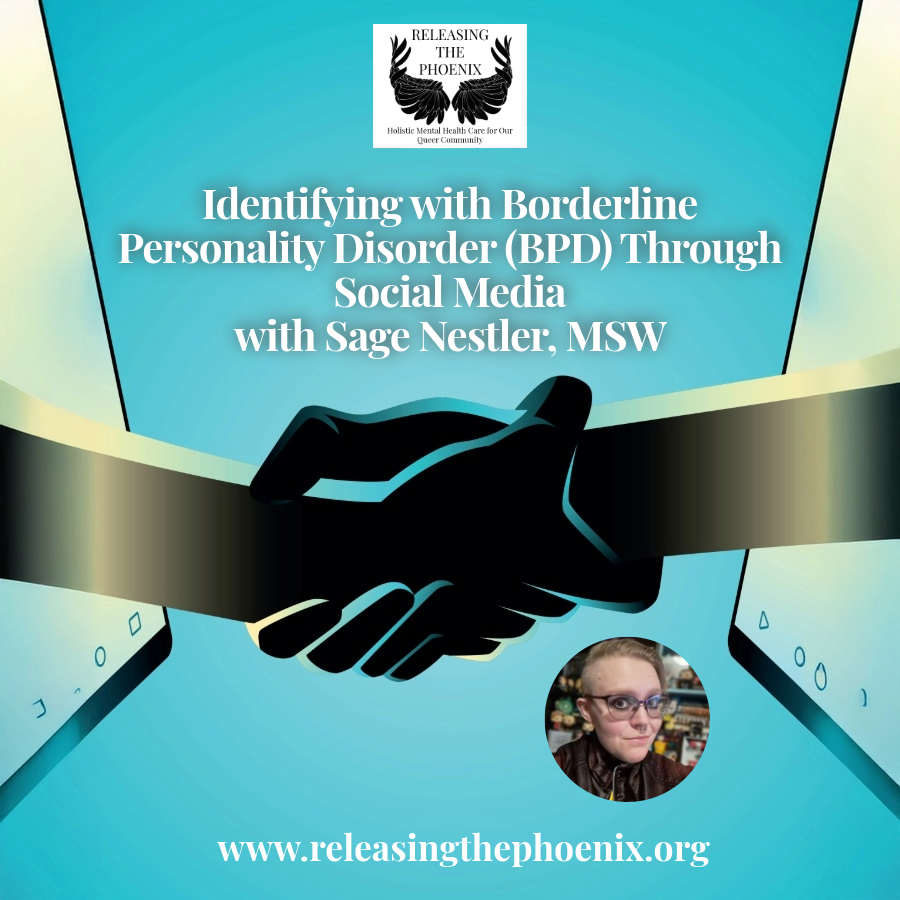
Borderline Personality Disorder (BPD)
Borderline personality disorder (BPD) is one of the most painful mental health conditions
It is also one of the most stigmatized.
The stigma surrounding BPD can increase the level of emotional pain those with BPD experience - as well as worsen their symptoms. So often, BPD is associated with narcissism, psychopathy, or sociopathy - which simply isn’t true.
While borderline personality disorder is classified as a Cluster B Personality Disorder with antisocial personality disorder (APD), histrionic personality disorder (HPD), and narcissistic personality disorder (NPD) in the DSM-5-TR, it differs greatly from other personality disorders.
Manipulation is often a stereotype tied to those who have BPD, but it is not a factor in the disorder.
Manipulation requires planning and intent, while a lot of the behaviors and symptoms exhibited by those with BPD are frantic efforts to find relief from experiencing intense and rapidly changing emotions.
Sage Nestler, MSW, is in a unique position where they have seen borderline personality disorder (BPD) from all sides.
They live with the disorder, work in the mental health field, specialize in BPD, and constantly experience stigma surrounding their diagnosis. The stigma they have experienced has gone so far as to Sage being rejected or losing mental and physical healthcare, as well as losing professional opportunities, simply because they have BPD.
Sage leads the Self-Advocacy team within the Advocacy Committee through the National Education Alliance for Borderline Personality (NEABPD).
They frequently advocate for those living with the disorder, their loved ones, and provide education for professionals on compassionate care. Sage uses their lived experience with the condition, education, and professional experience to inform their work and fight the stigma surrounding BPD.
Sage is open to interviews, quotes, questions, and more regarding anything surrounding borderline personality disorder (BPD).
Feel free to contact them below or through email: sage@releasingthephoenix.org.
We provide education for professionals surrounding BPD and how to provide compassionate care
Borderline Personality Disorder (BPD) Diagnostic Criteria
From the DSM-5-TR (Diagnostic and Statistical Manual of Mental Disorders - Text Revision)
A pervasive pattern of instability of interpersonal relationships, self-image, and affects, and marked impulsivity, beginning by early adulthood and present in a variety of contexts, as indicated by five (or more) of the following:
1. Frantic efforts to avoid real or imagined abandonment. (Note: Do not include suicidal or self-mutilating behavior covered in Criterion 5.) 2. A pattern of unstable and intense interpersonal relationships characterized by alternating between extremes of idealization and devaluation.
3. Identity disturbance: markedly and persistently unstable self-image or sense of self.
4. Impulsivity in at least two areas that are potentially self-damaging (e.g., spending, sex, substance abuse, reckless driving, binge eating). (Note: Do not include suicidal or self-mutilating behavior covered in Criterion 5.)
5. Recurrent suicidal behavior, gestures, or threats, or self-mutilating behavior.
6. Affective instability due to a marked reactivity of mood (e.g., intense episodic dysphoria, irritability, or anxiety usually lasting a few hours and only rarely more than a few days).
7. Chronic feelings of emptiness.
8. Inappropriate, intense anger or difficulty controlling anger (e.g., frequent displays of temper, constant anger, recurrent physical fights).
9. Transient, stress-related paranoid ideation or severe dissociative symptoms (American Psychiatric Association, 2024)






